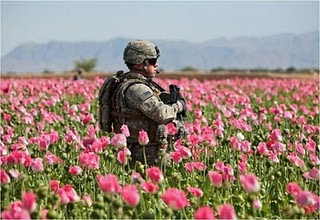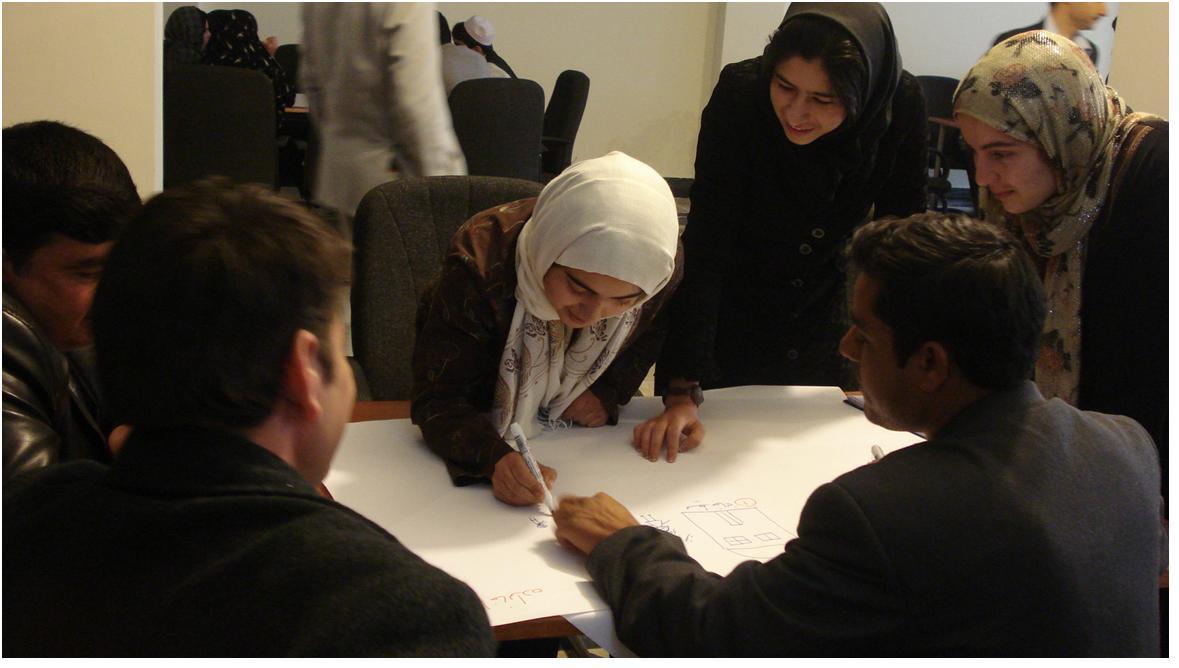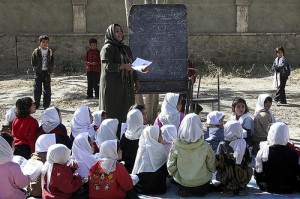The pervasive nature of the illicit opium industry in Afghanistan has created an atmosphere of corruption among government officials. As the current government is still in an era of transition, the funding and therefore, the ability to pay wages that could eradicate government corruption is limited. There is widespread belief that nearly every individual in influential positions in public life has been tainted by the trade. Some are actively involved; others are passive shareholders but involved nonetheless. As such, instead of aid flowing towards reconstruction, much of the funding coming from the international community is ending up in the wrong pockets.
The eradication of the opium industry is at the top of international forces agendas for securing the country. Without the eradication of the industry itself NATO forces cannot leave the country without the knowledge that it will likely devolve into tribal strife once again as the warlords tied to the opium trade continue to monopolize power relations in the provinces outside the control of Afghan government. The opium industry continues to threaten the development of state capacity and legitimacy, and, more concerning, the basic tenets of state sovereignty.
The cultivation of the opium poppy has been the sole industry sustaining the Afghan economy over the past three decades, however illicit it may be. The symbiotic relationship between the insurgency and the illegal cultivation of, and trade in, opium poppy and its derivatives has become clear in the past decade. The Taliban were successful in their efforts to control the cultivation of poppy by using oppressive power that is simply not available to a feeble Afghan state present only patchily in the areas now dominated by the opium industry, nor morally acceptable to NATO forces and the international community working in Afghanistan.
There have been many suggestions regarding how best to eradicate the production of the opium poppy in Afghanistan, from aerial spraying advocated by the Americans, to a shift to an agricultural industry advocated by much of the international community. The risks of aerial spraying are overwhelming, not only from a health and safety perspective, but also in the immediately detrimental effects which sudden eradication without alternative means to sustain the agricultural sector and the dependent population pose to the Afghan people and economy.
President Karzai and his government, along with much of the international community are vehemently against the prospect of aerial spraying given the uncertainty of how a population deprived overnight of much of their livelihood would react. There is a widespread fear among Afghan officials and international forces that such an action might risk turning an insurgency into an insurrection. Rather than dissolving the monetary sustenance of the insurgency, it would provide a new ideological basis on which to launch a renewed insurgency. Many American officials who are personally invested in the creation of a stable Afghanistan are also well aware of the connotations of the past that come with aerial spraying. They are well aware that Afghans tend to associate it with the period of aerial domination and chemical warfare under the Soviet empire. A NATO attempt to do the same, particularly under a United States-led mission, would invite damning comparisons between the two interventions, completely discrediting the value and legitimacy of the NATO mission internationally.
Of course, the alternative to aerial spraying that has been much touted by the international community is encouraging Afghan farmers to pursue alternative livelihoods to poppy. This requires taking steps to ensure that crops other than poppy can be grown in the environmental circumstances, that there are verifiable potential buyers for those crops and, of course, ensuring that they can obtain a price that would make the switch worthwhile. Unfortunately, such a transition is difficult. Wheat is the next most viable crop both environmentally and economically but the monetary return on wheat production is approximately one-tenth of the profits gained from opium production. Such disparate economic trade-offs make the crop transition model difficult to sell to opium farmers as their financial situation continues to be precarious even within the opium industry.
Additionally, what is a larger concern is the long-term health of the Afghan economy. The current pseudo-stability of the Afghan economy is contingent on two factors: the presence of Western forces and the maintenance of the economic status quo which rests solely on the presence of the opium war economy, the most economically productive part of Afghanistan’s agricultural sector.
What is clear overall is that there is no one solution to the eradication of the opium industry in Afghanistan. As many scholars have noted both aerial eradication and crop transition solutions would, in fact, make the problem worse not better. The boring reality is that the only sane approach to eradicating the industry is to tackle the cancer with a range of multiple, combined therapies, designed to cut out the original tumour but also to treat both the causes and potential consequences of the disease. An important element of this approach would be to cut off the culture of impunity stemming from state-level corruption that surrounds its funding. Without tackling the pervasive corruption of Afghan government officials the warlords will continue to monopolize the opium industry and legitimize themselves as a viable threat to the sovereignty of the Afghan state. The West has, over the past ten years, lacked the will and the resources to remove and replace those involved and, as such, have perpetuated the culture of impunity that is now rampant within the drug trade.




